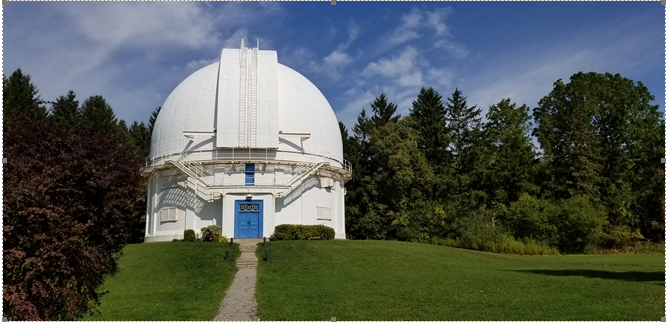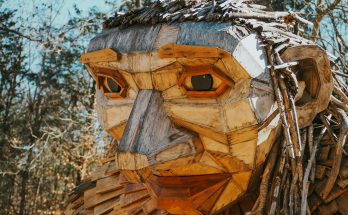Toronto/CMEDIA: The commemoration of the national historic significance of the David Dunlap Observatory was observed by Majid Jowhari, Member of Parliament for Richmond Hill, on June 15, on behalf of Steven Guilbeault, Minister of Environment and Climate Change and Minister responsible for Parks Canada, at a special ceremony to unveil a commemorative plaque.
“On behalf of the Government of Canada, I am pleased to commemorate the national historic significance of the David Dunlap Observatory National Historic Site…helped change fundamental concepts of the Universe. Historic designations reflect Canada’s rich and varied history…its important contributions to Canada’s heritage,” said Majid Jowhari, Member of Parliament for Richmond Hill in a news release.
It was in 1935 that the David Dunlap Observatory opened in what was then rural Richmond Hill with its 74-inch reflecting telescope the second largest in the world attracting excitement and attention from astronomers and visitors across the globe.
Clarence Chant, the man with the vision, and philanthropist Jessie Dunlap were instrumental in its establishment. Dunlap funded the land purchase and planning and construction of its two main buildings. It was named after her late husband, Donald Dunlap.
Connected to the University of Toronto — the first university to offer graduate degrees in astronomy in Canada, awarding its first doctorate in 1950 — the David Dunlap Observatory was a place of learning, research, and discovery for generations of Canadians positioning Canada at the forefront of space discovery and helped establish the field of academic astronomy in Canada which led to hundreds of publications.
Besides being the center of a major astronomical breakthrough in 1971, when Thomas Bolton’s research confirmed the existence of black holes, the observatory was also the research home of Helen Sawyer Hogg, Canada’s best-known astronomer and a renowned expert on star clusters through the middle of the 20th century.
Owned by the City of Richmond Hill, today the observatory known as Richmond Hill David Dunlap Observatory conserves 40 hectares as park land the city is helping to ensure continued public access to facilitate future generations to be inspired by the stars.
The Government of Canada designates significant persons, places, and events through the Historic Sites and Monuments Board of Canada, that shaped our country as one way of helping Canadians and youth connect with their past.
Driven largely by public nominations, the designation process under Parks Canada’s National Program of Historical Commemoration to date, more than 2,200 designations have been made nationwide.
National historic designations illustrate the defining moments in the story of Canada. Together, they tell the stories of who we are and connect us to our past, enriching our understanding of ourselves, each other, and our country. Heritage places provide a wide range of cultural, social, economic, and environmental benefits to their communities.
“The Richmond Hill David Dunlap Observatory is an iconic site in the City of Richmond Hill, full of heritage value and historical significance…becoming a destination park that will welcome everyone to our city to celebrate the stars and enjoy the beauty of the vast natural parkland,” said David West, Mayor of Richmond Hill in the news release.
The Richmond Hill David Dunlap Observatory still holds its title as being the largest optical telescope in Canada.
An extensive conservation of the exteriors of both the Administration building and the Observatory dome was completed by Richmond Hill in 2021 to restore and preserve the heritage features of this national historic site.
Access to the Observatory dome to view the telescope by the visitors can be done by registering for programs and events offered by the Toronto Chapter of the Royal Astronomical Society of Canada and the David Dunlap Observatory Defenders or through private group tours.
Combining mid-20th Modern and Neo-Classical elements, the architectural design of the Observatory dome and Administration building feature elegant Beaux-Arts designs consistent with other University of Toronto buildings.
Created in 1919, the Historic Sites and Monuments Board of Canada advises the Minister of Environment and Climate Change regarding the national historic significance of persons, places, and events that have marked history in Canada. Together with Parks Canada, the Board ensures that Canadians are aware of their important stories by recognizing the subjects of national historic significance.
The vast majority of nominations brought forward for the consideration of the Historic Sites and Monuments Board of Canada originate from members of the public.
#RichmondHill; #Ontario. #Canada; #DavidDunlapObservatory





